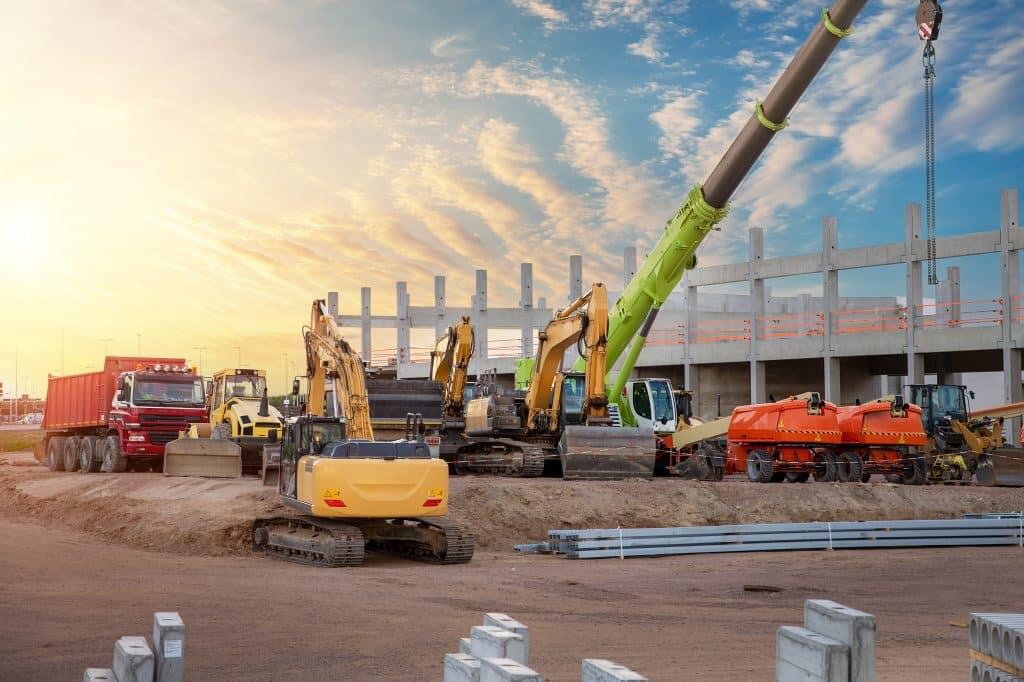
Why perform soil gas measurements?
Soil gas sampling is a method of assessing air quality and the presence of pollutants in the soil. They are carried out by specialized geotechnical engineering firms, who are responsible for carrying out technical studies for real estate projects.
Regulations for soil gas measurement in France and abroad vary from country to country and from context to context.
In France, a standard NF ISO 10381-7 (2006) provides guidelines for soil gas sampling. This standard is currently being revised by AFNOR. There is also a practical guide produced by BRGM and INERIS, which sets out the best practices and procedures for soil gases and indoor/outdoor air sampling in the context of soil and/or groundwater pollution. This guide is consistent with the national policy on polluted sites and soils and with standard NF X 31-620 (parts 1 to 4).
In other countries, there are also standards or guides governing the measurement of soil gases. In England, for example, there is a draft BS 8576 Guidance on investigations for ground gas – Permanent gases and Volatile Organic Compounds (VOCs) (2012), which provides a method for carrying out soil gas investigations. There are also other standards or guides depending on the country or region.
Some examples of soil gas measurement applications are listed below:
- Measurements upstream and downstream of building renovation projects
- Measurements upstream and downstream of urban or rural development projects
- Remediation projects
- Brownfield redevelopment
What compounds are measured in soil gas?
TERA Environnement offers analysis of a wide range of chemical contaminants.
TERA Environnement can analyze over 500 VOCs, including
- Aromatic and aliphatic hydrocarbons
- TPH (Total Petroleum Hydrocarbons) fractions from C5 to C16
- Oxygenates including methanol, phenol and cresols :
Methanol; Ethanol; Tert-butanol; 1-Butanol; 1-Propanol; 2-Butanol (Sec-Butanol); 2-Propanol (IPA); Isobutanol; Phenol; o-Cresol; m-Cresol; p-Cresol etc.
- Volatile Organic Halogenated Compounds or Halogenated VOCs :
Vinyl chloride monomer (VCM); Dibromomethane; Trichloromethane (Chloroform); Tetrachloromethane (CCl4); 1,2-Dichloroethane (1,2-DCE); 1,1-Dichloroethylene; Cis 1,2 Dichloroethylene; 1,1,1 Trichloroethane ; Trichloroethylene; Tetrachloroethylene (Perchloroethylene); 1,2-Dichloropropane; Trans 1,3 Dichloropropene; Cis 1,3 Dichloropropene; Trans 1,2 Dichloroethylene; 1,1,2-Trichloroethane; 1,1 Dichloroethane; Chloroethane
- Mercaptans and sulfur compounds :
Tert Butanethiol; Methanethiol; Ethanethiol; 1-Propanethiol; 2-Propanethiol; 1-Butanethiol; 2-butanethiol; Dimethylsulfide (DMS); Carbon Disulfide (CS2); Dimethyl Disulfide (DMDS); Dimethyl Trisulfide (DMTS)
- Very volatile organic compounds (VOCs between C2 and C5) :
Ethane; Ethylene; N-Propane; Propene; 2-Methylpropane; N-Butane; Acetylene; trans-2-Butene; 1-Butene; cis-2-Butene; Isopentane; N-Pentane; 1,3-Butadiene; trans-2-Pentene; 1-Pentene; Isoprene
- Acid gases :
Hydrogen sulfide (H2S); Ammonia (NH3); Total cyanides; Sulfur dioxide (SO2) etc.
- Volatile fatty acids :
Acetic acid; Valeric acid; Isovaleric acid; Butyric acid; Isobutyric acid; Propionic acid
- Amines :
2,2 Aminoethoxyethanol; 3-Methoxypropylamine; Cyclohexylamine; Diethanolamine; Diethylamine; Dimethylamine; Ethanolamine; Ethylamine; Methylamine; Morpholine; N,N Diethylethanolamine; N-Butylamine; N-Propylamine; Triethanolamine; Triethylamine; Trimethylamine etc.
- Formaldehyde; Acetaldehyde; Acrolein; Propanal; Butanal; Benzaldehyde; Isopentanal; Pentanal; Hexanal; 2-Butenal; Acetone
- Naphthalene; Acenaphthene; Fluorene; Phenanthrene; Anthracene; Fluoranthene; Pyrene; Benzo(a)Anthracene; Chrysene; Benzo(b+j)Fluoranthene; Benzo(k)Fluoranthene; Benzo(a)Pyrene (BaP); DiBenzo(a,h)Anthracene; Benzo(g,h,i)Perylene; Indeno(1,2,3,c,d)pyrene; Acenaphthylene
N2O
- Bis (2-ethylhexyl) Phthalate ; Di-Octyl Phthalate ; Butylated hydroxytoluene (BHT) ; Dimethyl Phthalate ; DiHeptyl Phthalate ; Texanol Isobutyrate (TXIB) ; Diethyl Phthalate (DEP) ; Diisobutyl Phthalate (DIIP) ; DiButyl Phthalate (DBP) ; Benzyl-Butyl-Phthalate (BBP)
- Octamethyl Cyclotetrasiloxane (D4); Hexamethyl Disiloxane (HMDSO) (L2); Octamethyl Trisiloxane (L3); Decamethyl Tetrasiloxane (L4); Dodecamethyl Pentasiloxane (L5) ; Hexamethyl Cyclotrisiloxane (D3); Octamethyl Cyclotetrasiloxane (D4); Decamethyl Cyclopentasiloxane (D5); Dodecamethyl Cyclohexasiloxane (D6)
- Carbon monoxide (CO); Methane (CH4); Carbon dioxide (CO2); Dihydrogen (H2); Nitrogen (N2); Dioxygen (O2)
What sampling equipment is available for your soil gas measurements?
TERA Environnement can supply and/or rent the sampling media and equipment needed for the analyses you require.
- 6L and 1L canisters
- Impregnated filters
- DNPH cartridges
- Charcoal sorbent tubes, silica gel sorbent tubes, etc.
- Thermodesorption tubes
- Hopcalite tubes for gaseous mercury
- Bubbling solutions
- Bags
Active samplers are used in conjunction with sampling pumps, and are designed for measurements lasting from a few hours to a day.
- Pumps
- Bubblers
- Veriflow for canister sampling
Stations for real-time measurements
Which parameters are available under COFRAC accreditation?
TERA Environnement is COFRAC accredited in Soil Gas for gaseous mercury.

Consult our scopes of accreditation: Accréditation Cofrac Essais 1-5598 et 1-5599, list of sites and scopes available on www.cofrac.fr/en
Scope of our Crolles laboratory: 1-5598 Fuveau laboratory: 1-5599 Scope of our Fuveau laboratory: 1-5599
- Gaseous mercury on hopcalite tube 500mg
To support you even further and guarantee you the best possible service!
In the event of soil gas pollution, it can be useful to take samples on thermodesorption tubes for rapid screening of VOC pollution. Sampling on thermodesorption tubes lasts no more than ten minutes, making it possible to carry out large-scale screening analyses.
Our laboratory also offers mercury analysis on active media, enabling the TRV (Toxicological Reference Value) to be reached within 6 to 8 hours.
In addition, on sites where pollution control tents are installed, it may be useful to monitor dust and VOC concentrations. Our laboratory can provide you with connected measuring stations to monitor the impact of the worksite in real time.

